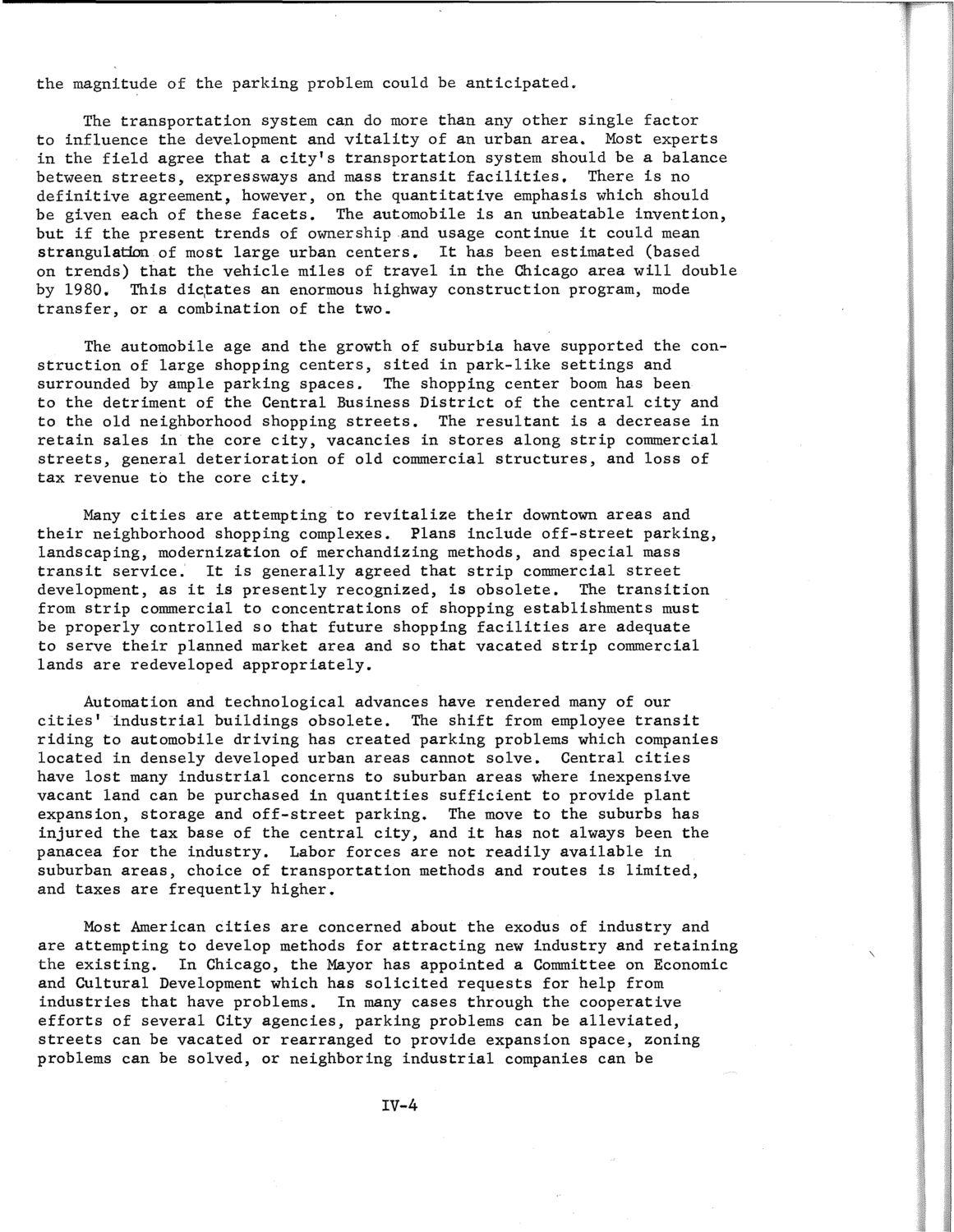| |
| |
Caption: SWE - Proceedings of the First International Conference of Women Engineers and Scientists
This is a reduced-resolution page image for fast online browsing.

EXTRACTED TEXT FROM PAGE:
the magnitude of the parking problem could be anticipated. The transportation system can do more than any other single factor to influence the development and vitality of an urban area. Most experts in the field agree that a city's transportation system should be a balance between streets, expressways and mass transit facilities. There is no definitive agreement, however, on the quantitative emphasis which should be given each of these facets. The automobile is an unbeatable invention, but if the present trends of ownership and usage continue it could mean strangulation of most large urban centers. It has been estimated (based on trends) that the vehicle miles of travel in the Chicago area will double by 1980. This dictates an enormous highway construction program, mode transfer, or a combination of the two. The automobile age and the growth of suburbia have supported the construction of large shopping centers, sited in park-like settings and surrounded by ample parking spaces. The shopping center boom has been to the detriment of the Central Business District of the central city and to the old neighborhood shopping streets. The resultant is a decrease in retain sales in the core city, vacancies in stores along strip commercial streets, general deterioration of old commercial structures, and loss of tax revenue to the core city. Many cities are attempting to revitalize their downtown areas and their neighborhood shopping complexes. Plans include off-street parking, landscaping, modernization of merchandizing methods, and special mass transit service. It is generally agreed that strip commercial street development, as it is presently recognized, is obsolete. The transition from strip commercial to concentrations of shopping establishments must be properly controlled so that future shopping facilities are adequate to serve their planned market area and so that vacated strip commercial lands are redeveloped appropriately. Automation and technological advances have rendered many of our cities' industrial buildings obsolete. The shift from employee transit riding to automobile driving has created parking problems which companies located in densely developed urban areas cannot solve. Central cities have lost many industrial concerns to suburban areas where inexpensive vacant land can be purchased in quantities sufficient to provide plant expansion, storage and off-street parking. The move to the suburbs has injured the tax base of the central city, and it has not always been the panacea for the industry. Labor forces are not readily available in suburban areas, choice of transportation methods and routes is limited, and taxes are frequently higher. Most American cities are concerned about the exodus of industry and are attempting to develop methods for attracting new industry and retaining the existing. In Chicago, the Mayor has appointed a Committee on Economic and Cultural Development which has solicited requests for help from industries that have problems. In many cases through the cooperative efforts of several City agencies, parking problems can be alleviated, streets can be vacated or rearranged to provide expansion space, zoning problems can be solved, or neighboring industrial companies can be IV-4
| |